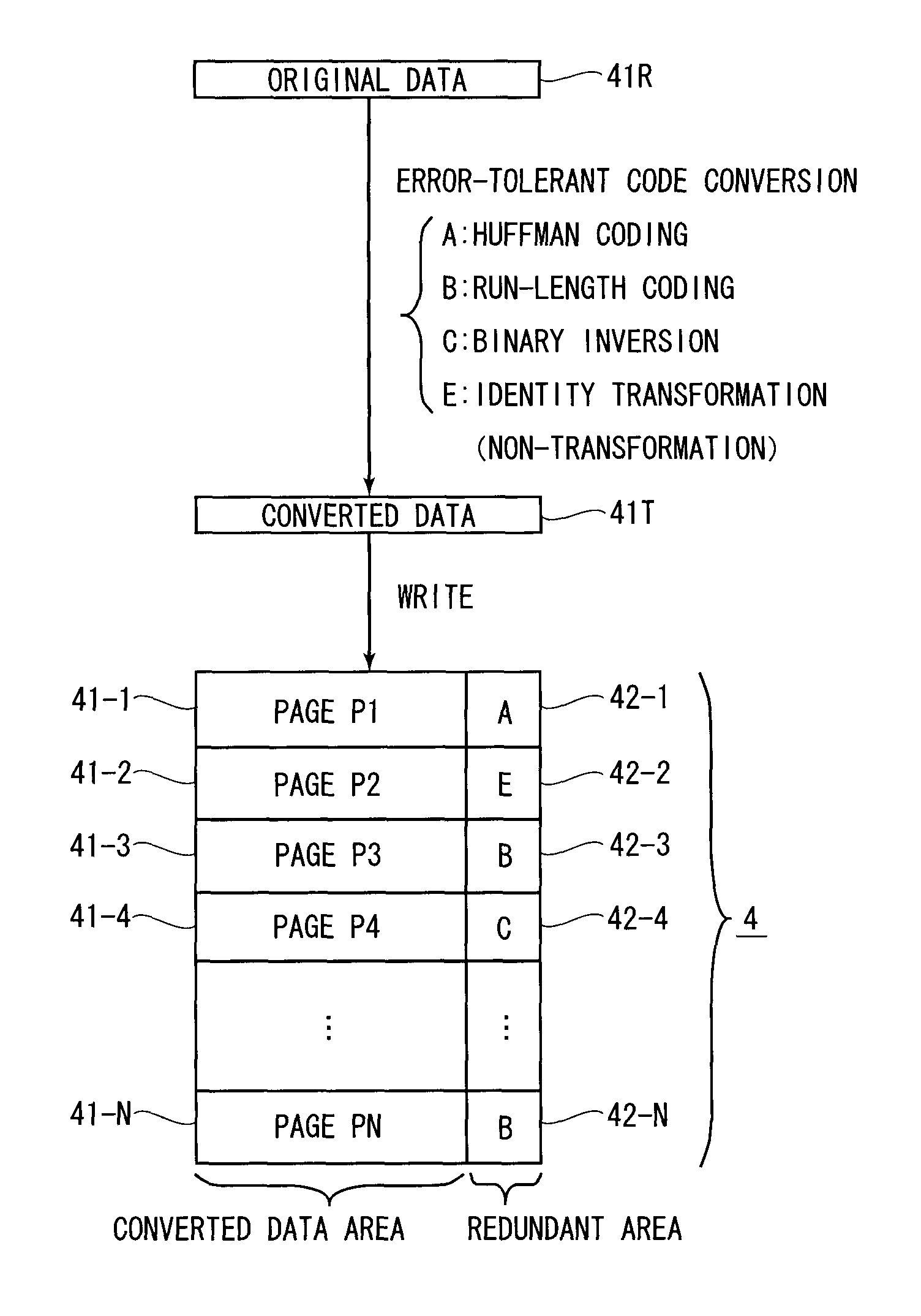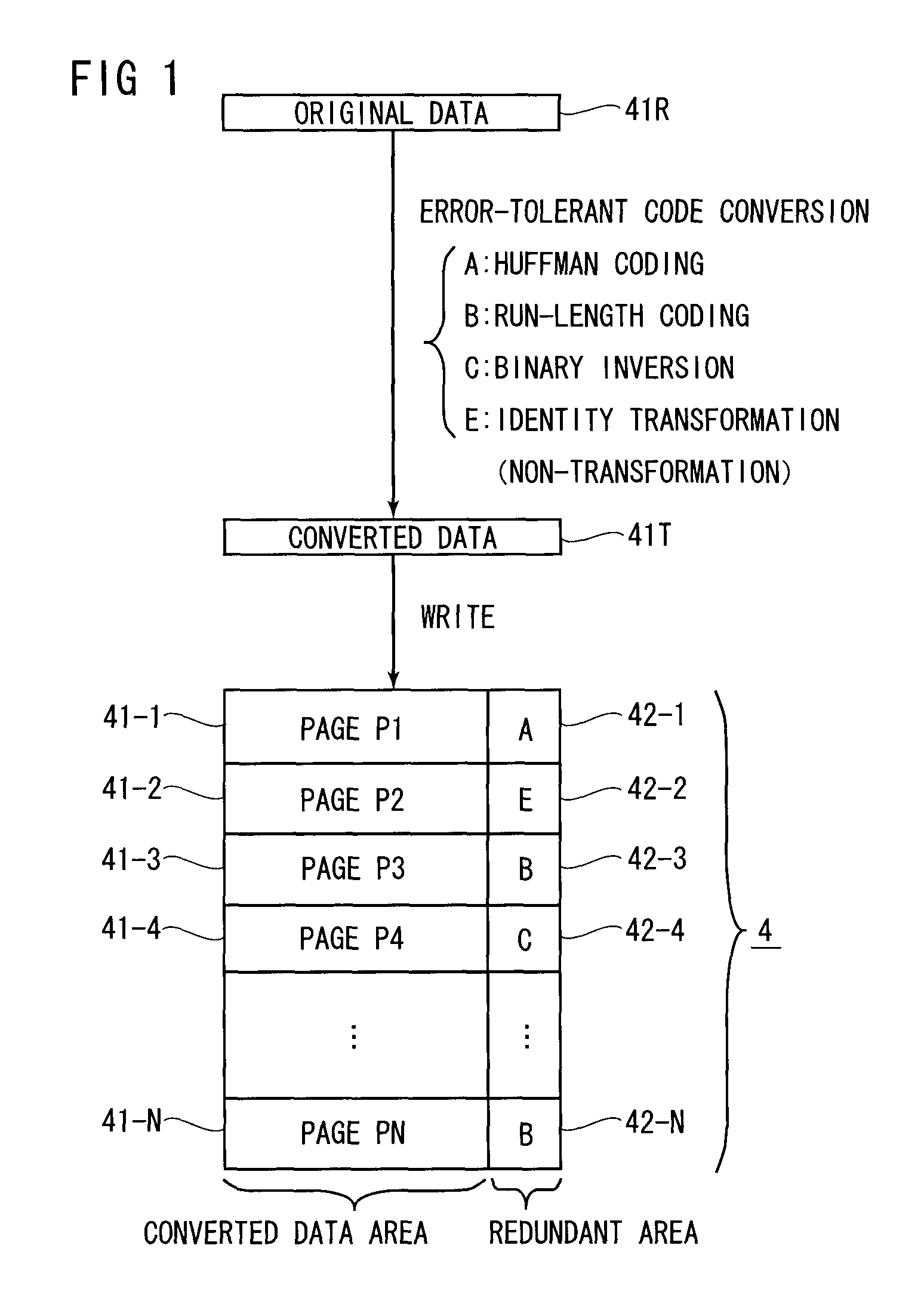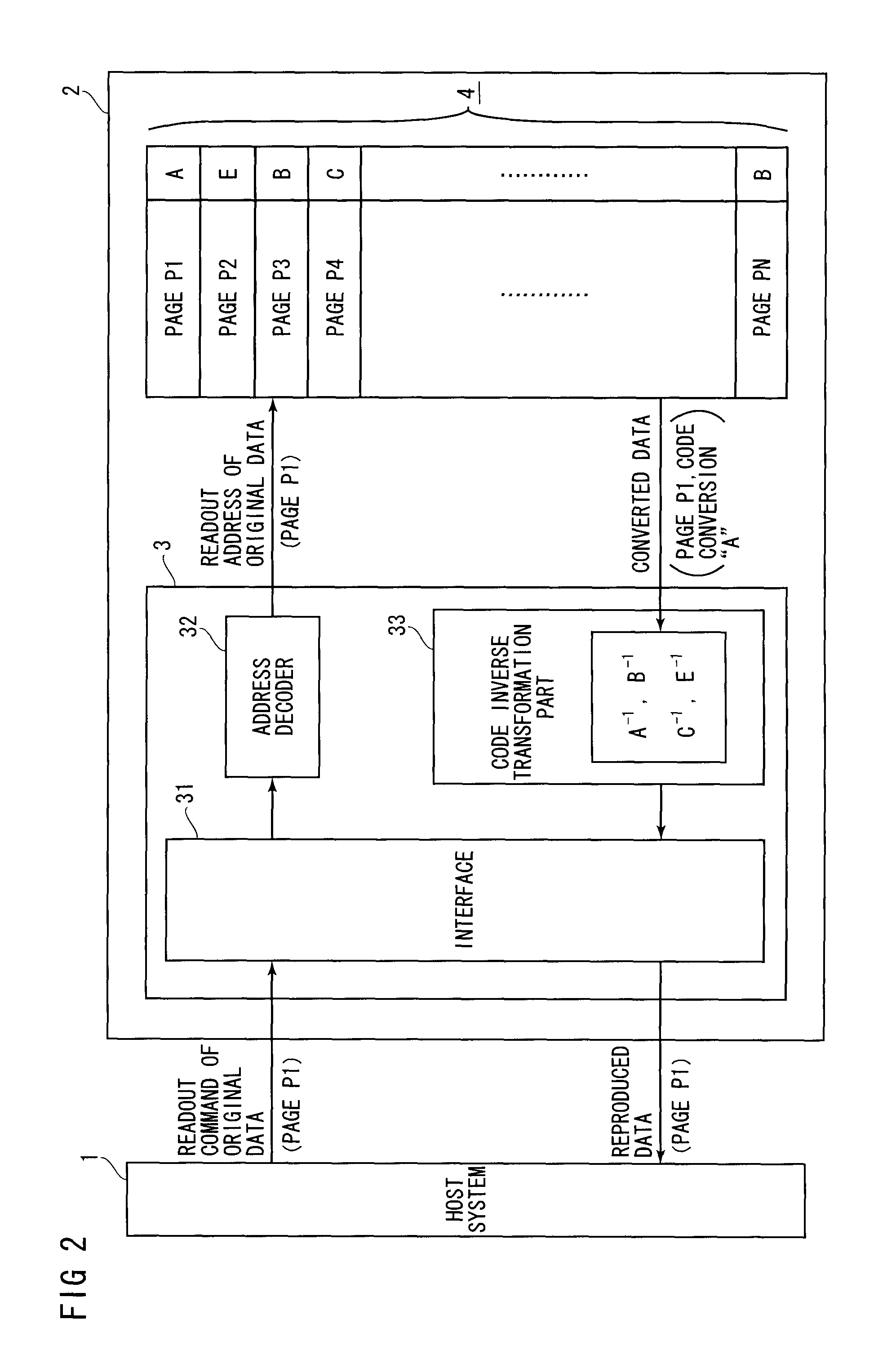Memory control method and memory system
a memory control and memory technology, applied in the field of memory control methods and memory systems, can solve the problems of unintended rewriting of programs, inapplicability, and inability to recover the function of unselected cells, so as to avoid or suppress the phenomenon of “read disturb” and avoid or suppress the effect of the phenomenon
- Summary
- Abstract
- Description
- Claims
- Application Information
AI Technical Summary
Benefits of technology
Problems solved by technology
Method used
Image
Examples
Embodiment Construction
[0021]Hereinafter, preferred embodiments of the present invention will be discussed with reference to accompanying drawings. FIG. 1 shows content of data stored in a memory. Original data 41R is data produced by a programmer. In usual cases, the original data 41R is written into a memory 4.
[0022]However, the original data 41R may possibly be data including a large amount of binary data which is apt to be unintentionally rewritten. More specifically, while a specific data is being repeatedly read out, binary data stored in a memory cell which has become slightly writable is apt to be rewritten to be different binary data, as described above. Thus, it is difficult to avoid or suppress a “read disturb” phenomenon in which data is unintentionally rewritten when the original data 41R is repeatedly read out from the memory 4.
[0023]In view of the foregoing matters, according to the preferred embodiments of the present invention, converted data 41T including a smaller amount of binary data ...
PUM
 Login to View More
Login to View More Abstract
Description
Claims
Application Information
 Login to View More
Login to View More - R&D
- Intellectual Property
- Life Sciences
- Materials
- Tech Scout
- Unparalleled Data Quality
- Higher Quality Content
- 60% Fewer Hallucinations
Browse by: Latest US Patents, China's latest patents, Technical Efficacy Thesaurus, Application Domain, Technology Topic, Popular Technical Reports.
© 2025 PatSnap. All rights reserved.Legal|Privacy policy|Modern Slavery Act Transparency Statement|Sitemap|About US| Contact US: help@patsnap.com



